
Validators are nodes (computers) set up all around the world that are responsible for verifying and adding transactions to the blockchain. They play a crucial role in maintaining the blockchain’s security and integrity, ensuring that fraudulent transactions are prevented from being added.
The term “validator” is specific to blockchains using the Proof of Stake (PoS) or Delegated Proof of Stake (DPoS) consensus mechanisms. Consensus mechanisms are the various methods blockchains use to reach an agreement among their participants on whether a transaction is valid. This collective agreement process determines if a transaction is real or not (hence the term “consensus mechanism”). Different blockchains choose their consensus mechanism based on their unique priorities, such as scalability, security, speed, or transparency, as each mechanism has distinct advantages.
The general role of a validator remains the same across different blockchains: to validate and verify transactions. However, how they perform this function may vary slightly, and the terminology used to describe them might differ as well. Despite these variations, their ultimate goal is always to maintain the blockchain’s integrity. The term “validator” specifically applies to blockchains that use Proof of Stake or Delegated Proof of Stake consensus mechanisms. On Proof of Work (PoW) blockchains, such as Bitcoin, validators are referred to as “miners.”
Proof of Work and Its Energy Challenges

In Proof of Work (PoW) blockchains, miners solve complex mathematical puzzles to propose new blocks. Once a miner successfully solves a puzzle, the solution is broadcast to other nodes for verification. If verified, a new block containing the validated transactions is added to the blockchain, and the miner who solved the puzzle is rewarded. These rewards typically consist of block rewards, which may include gas fees or a mix of gas fees and predetermined allocations, such as newly minted tokens.
However, the process of solving these puzzles requires significant computational power, resulting in high energy consumption. This issue is compounded by the fact that all miners compete to solve the puzzle simultaneously, meaning the computational efforts of all but one miner are effectively wasted. This energy-intensive process is what led to the development of Proof of Stake (PoS) blockchains.
Proof of Stake (PoS) blockchains

Proof of Stake is an energy-efficient, scalable, accessible, and secure consensus mechanism that requires participants (validators and nodes) to lock up a specific number of tokens (stake) as collateral to become validators. These validators are chosen randomly based on factors like the size of their stake, the age of their stake (how long the tokens have been staked), the validator’s uptime, or sheer randomness, depending on the specific PoS blockchain’s rules. Validators are responsible for validating transactions and creating (proposing) new blocks. Once a validator has been selected to validate a transaction, the validated transactions are broadcasted to other nodes on the blockchain for verification before being added to the blockchain.
Validators earn block rewards, which can be composed solely of gas fees or a mix of gas fees and predetermined rewards. These predetermined rewards may come from allocations set aside or newly minted tokens. The tokens staked by validators ensure honest participation because, if caught acting maliciously, they risk losing a portion of their tokens (a process known as slashing) as a penalty.
The Power of Delegation
Proof of Stake also offers an added benefit for users who do not want to run a validator node: the option to delegate their stake to an existing validator in the network. These users are called delegators. Becoming a validator usually involves locking up a specific minimum amount of the native token and setting up a computer (node), which requires technical expertise and ongoing management. However, this process consumes significantly less energy than Proof of Work and avoids wasting energy, as the validator to add the block is chosen before any computational resources are used.
Users who prefer not to manage a node or lack the minimum required stake can delegate their tokens to existing validators. Delegators do not need to meet a minimum staking amount or set up a node. In return, delegators earn a portion of the block rewards received by the validator they support, proportional to their stake, whenever that validator is selected to validate transactions. This system incentivizes delegators to participate and validators to grow their stake, as a larger overall stake increases their chances of being selected to validate transactions. Validators also benefit from delegations by earning a pre-agreed fee (represented as a percentage) from the block rewards earned by their delegators.
An extra bit of info: In Proof of Stake (PoS) blockchains, validators are essentially nodes that validate transactions and propose new blocks. In contrast, in Proof of Work (PoW) blockchains, nodes are split into two types: miner nodes, which solve computational puzzles to propose new blocks, and non-miner nodes, which validate transactions and blocks but do not participate in solving puzzles.
What Do Validators Actually Do?

Blockchain technology relies heavily on cryptography, a technique that validators use to verify the authenticity of transactions and blocks. This ensures that unauthorized modifications to the blockchain ledger are prevented. Validators play a critical role in monitoring transactions and safeguarding the integrity of the blockchain.
Each validator’s node maintains a copy of the entire blockchain. Acting as arbiters, validators cross-reference new transactions against the blockchain’s history to ensure their legitimacy. This involves several key tasks:
- Verifying Digital Signatures: Ensuring that transactions are properly signed using the sender’s private key.
- Checking Account Balances: Confirming that the sender has sufficient funds to complete the transaction.
- Preventing Malicious Activities: Protecting against threats like double-spending or invalid transactions.
- Adhering to Network Rules: Ensuring all transactions comply with the blockchain’s predefined rules.
Validators don’t just scrutinize individual transactions — they also validate entire blocks. They:
- Verify Block Validity: Ensure that each block adheres to the blockchain’s size constraints and cryptographic rules, preventing the inclusion of invalid or malicious blocks.
- Sign and Propose Blocks: Once transactions are validated, validators sign off on adding them to a new block and then broadcast the proposed block to other nodes in the network.
- Facilitate Consensus: Validators participate in the network’s consensus process, where nodes agree on the validity of a block. If enough validators approve the block, it is added to the blockchain.
- Update the Ledger: Each validator then updates their local copy of the blockchain by adding the newly validated block, ensuring all participants maintain an identical and up-to-date ledger.
The validator that successfully proposes and validates a block is rewarded, typically in the native cryptocurrency of the underlying blockchain.
Validators are spread worldwide, operating independently of each other. This setup helps make the network decentralized, secure, and resistant to manipulation, censorship, or single points of failure.
Walkthrough of Delegating on the Cosmos Blockchain
One of the most popular proof-of-stake blockchains is the Cosmos Hub, with ATOM as its native token. To become a validator on Cosmos, users need to set up a client node to be considered. There’s no minimum amount to stake, but the top 180 validators with the highest number of stakes are designated as active validators on Cosmos. The total stake of a validator includes both their own self-bonded stake (i.e., the validator’s own stake) and the stake of their delegators. An in-depth guide on getting started as a validator can be found here
Delegating, as highlighted earlier, is an easier way for users to participate in securing a blockchain with little to no barrier to entry. The benefits of staking include:
- Receiving a share of block rewards based on the amount staked
- Contributing to securing the network
- Voting on governance proposals and deciding the future of the blockchain
- Creating governance proposals to make changes, suggestions, or updates on the future of the network (Requirements for creating a governance proposal usually involve stakers putting up a certain amount of their tokens to prevent spam and malicious proposals. The amount varies depending on the blockchain, but it’s 250 ATOM on the Cosmos Network.)
- Receiving airdrops from other projects: Besides block rewards, stakers are often eligible for other rewards from different protocols or blockchains.
Step 1: Setting up your Wallet
- First, download a Cosmos-compatible wallet. There are a few options out there, such as Keplr, Leap, etc. But for this example, we’ll be using Keplr. So, go ahead and download it and set it up.





 You can choose as many networks as you would like, but be sure to select Cosmos Hub.
You can choose as many networks as you would like, but be sure to select Cosmos Hub.Step 2: Getting the Native Token (ATOM)
There are a few ways to get ATOM onto the Cosmos Network, such as:
- Depositing from a Centralized exchange like Binance or Bybit. Copy your ATOM address from Keplr and withdraw from Binance to it.
- Bridging from another blockchain: You can use a bridge like Osmosis if you have funds on other blockchains within the Cosmos ecosystem or use a bridge like Satellite that lets you bridge from non-Cosmos-based blockchains.

 Copy Your wallet Address
Copy Your wallet Address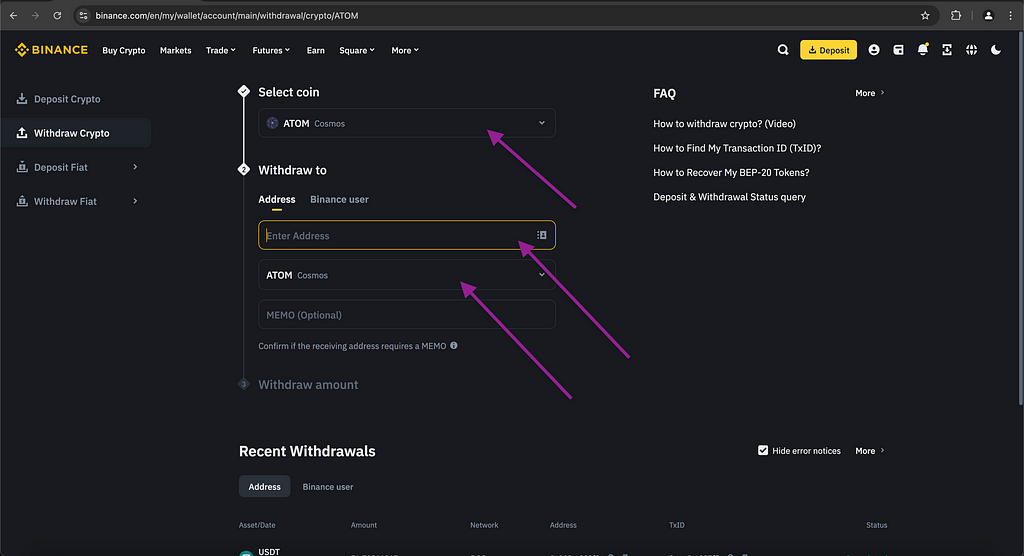


Step 3: Staking Dashboard
- Click on Manage Portfolio in the Keplr Dashboard from your Keplr wallet, or head over to https://wallet.keplr.app.
- There are a variety of blockchains to choose from, but click on Cosmos Hub in the sidebar. This will automatically put us on the staking tab.
- Alternatively, you can click on Staking directly from the sidebar on the left. Then, search for Cosmos and select it.
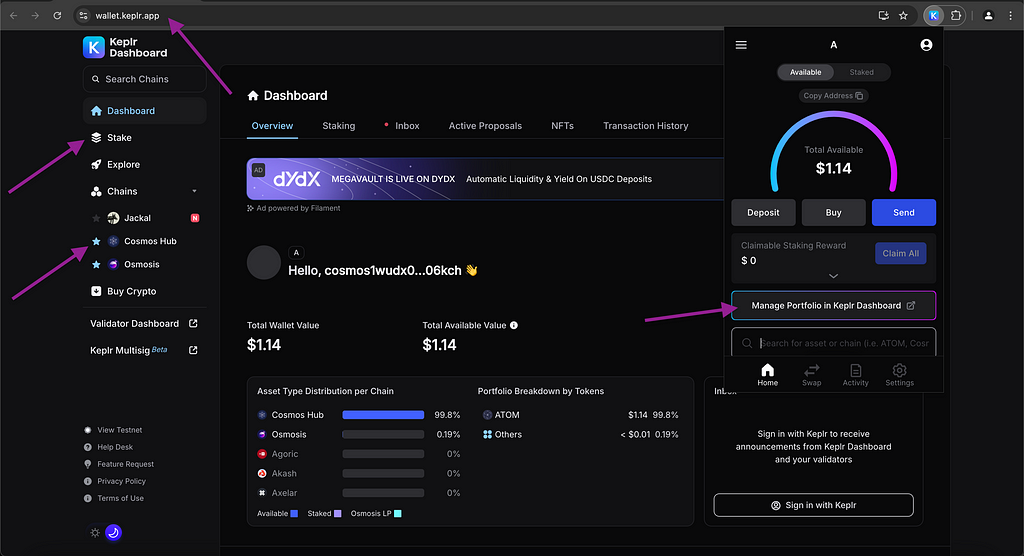



Step 4: Choosing a Validator
- When choosing to stake to a validator, delegators might consider things like: Security, historical performance & reputation, technical capabilities, volume of Staked assets, low fees, higher reward (annual percentage yield “APY”), and decentralization.
- Let’s take a look at the validators here and stake to one outside the top 20 to help improve decentralization, while considering the other factors.
- I choose to stake to Blockpower. You can select anyone you like. Blockpower offers super-low fees, reliable technical performance, and a great APY, making it a solid choice for staking.


Step 5: Staking to the Selected Validator
- Click on Stake.
- Input any amount. Be sure not to stake everything you have, as you’ll need enough to cover the fee for staking, claiming rewards, staking additional amounts (such as rewards or increasing your stake), and unstaking
- Select Stake.
- Confirm the transaction.



Done. You are officially a delegator on the Cosmos network.
Unstaking in the Future
If you decide to unstake in the future, you can do that from the Cosmos Hub page. Head back to this page and click Unstake. Confirm the transaction. Depending on the blockchain, unstaking might take a few days to weeks to complete. For Cosmos Hub, it takes 21 days to ensure network security and stability.
You can stake to a variety of validators, which is recommended. In case a validator gets slashed, you’ll be protected from significant losses. You can also switch from a validator you’re currently staking to another.
To switch validators:
- Head there again and click Switch Validator.
- Choose the validator you want to switch to.
- Enter the amount (either all or a portion) and confirm the transaction.

For claiming rewards, you can do that here. If you want to claim and stake in one single transaction, head over to the dashboard and do that here.


Walkthrough of Delegating on Solana Blockchain
Solana is one of the largest blockchains in the crypto ecosystem, ranked 5th by market cap. It uses a Proof of Stake (PoS) consensus mechanism, but with a twist — combining PoS with Proof of History (PoH). This unique combination allows Solana to process thousands of transactions per second while staying secure and decentralized. Validators on Solana don’t have a minimum stake requirement, but they are charged a daily fee of 1.1 SOL for validation. For a deeper dive on setting up a Solana validator node, check here.
Delegating/Staking on Solana
Step 1: Setting up your Wallet
Staking on Solana is super easy and can be done from any wallet that supports Solana staking, like Phantom or Solflare. In this example, we’ll be using Phantom Wallet. Go ahead and download it and set it up.
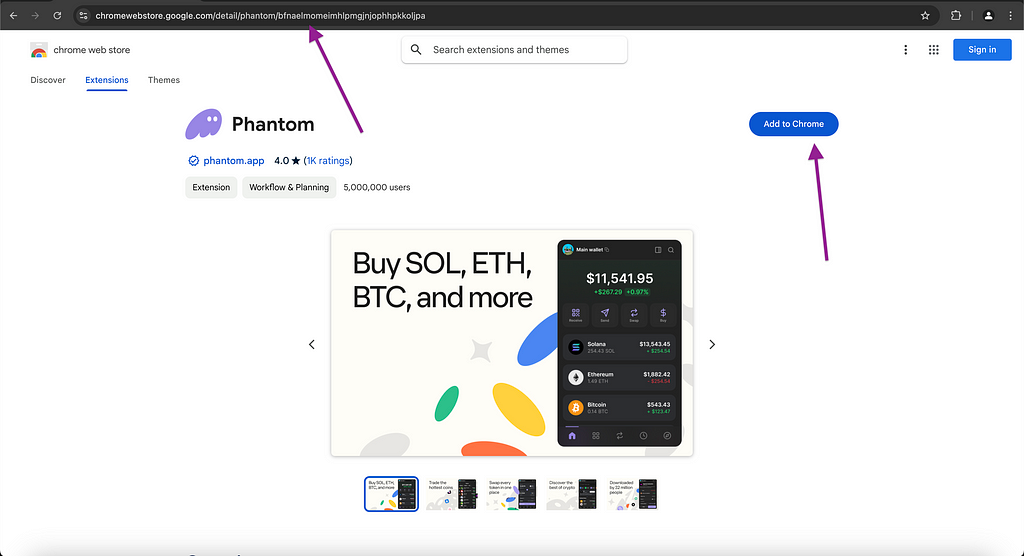



Step 2: Getting the Native Token (SOL)
There are a few ways to get SOL onto the Solana Network, such as:
- Depositing from a Centralized Exchange: You can deposit SOL from exchanges like Binance or Bybit. Simply copy your SOL address from Phantom and withdraw the SOL to it.
- Bridging from Another Blockchain: If you have funds on other blockchains, you can use a bridge like Wormhole to transfer them onto Solana.
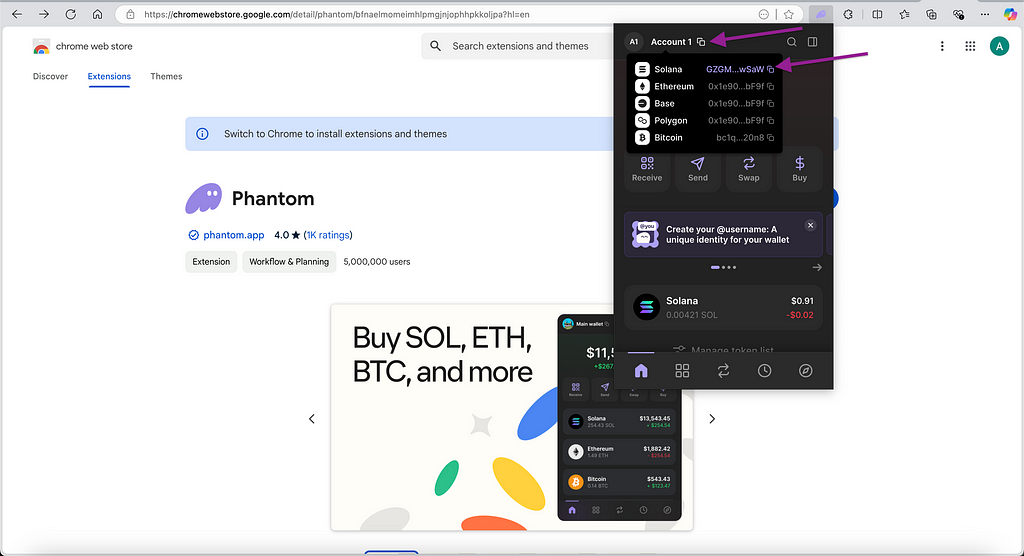
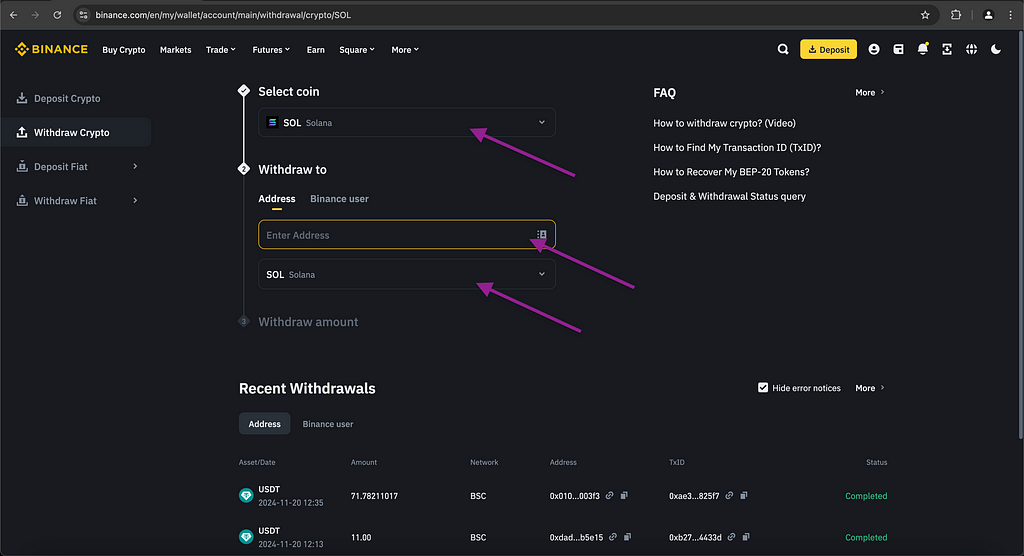

Step 3: Staking Solana
- Go to your Solana wallet, click on Solana, then either click Start Earning SOL or select More and click Stake SOL. Both options will work. When using native staking, you can choose validators that don’t charge any fees for staking. I chose Chainlabs for their zero fees on staking, great APY, and strong reputation.
Note: When choosing to stake to a validator, delegators might consider things like: Security, historical performance & reputation, technical capabilities, volume of Staked assets, low fees, higher reward (annual percentage yield “APY”), and decentralization
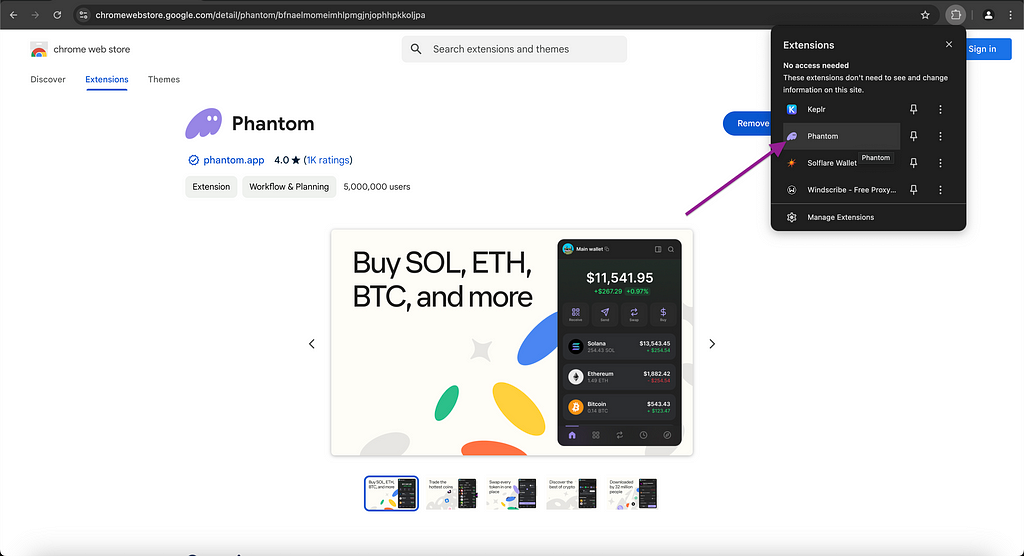




 Liquid Staking
Liquid Staking
 Native Staking
Native StakingDone. You are officially a delegator on the Solana network
Unstaking in the Future
If you decide to unstake later, head back to this page, click on your stake, then select “Unstake.” Confirm the transaction. Keep in mind that unstaking on Solana takes up to 2 days per epoch (much quicker than the Cosmos network) to ensure network security and stability. An epoch on Solana is a set period of time (about 2 days) during which validators are selected to produce blocks and process transactions. At the start of each epoch, a new group of validators is chosen.


And that’s it! You’ve successfully delegated your tokens and are now a part of securing these Networks. By staking, you’re contributing to the consensus process that keeps the network running smoothly and decentralized. You’re not just earning rewards — you’re helping maintain the integrity of the blockchain, ensuring it’s secure and resistant to manipulation. Whether you’re staking to support a validator, validating as a node operator, or participating in governance, you’re playing a crucial role in shaping the future of the network. Enjoy the rewards, and welcome to the decentralized future of blockchain.
A Comprehensive Guide to Validators and Delegation was originally published in The Capital on Medium, where people are continuing the conversation by highlighting and responding to this story.

 3 days ago
18
3 days ago
18








 English (US) ·
English (US) ·